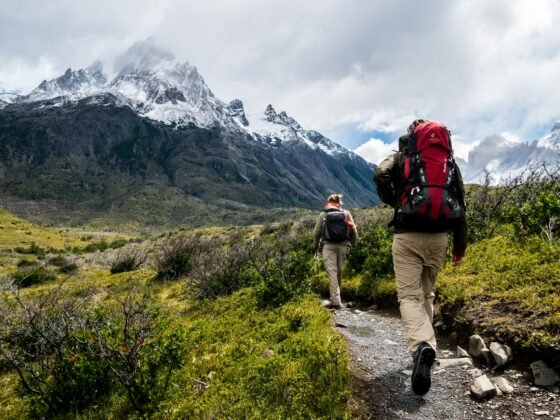
When it comes to hiking, few things are as crucial as the shoes on your feet. Whether you’re venturing on a short woodland trail or embarking on a multi-day mountain expedition, the right footwear can mean the difference between a memorable adventure and an uncomfortable ordeal. This article will guide you through the maze of hiking shoe options and help you make an informed choice.
Types of Hiking Shoes
- Hiking Sandals: These are perfect for light hikes and especially suitable for trails with water crossings. They offer good breathability but limited protection.
- Trail Shoes: Lighter than traditional hiking boots, these are designed for relatively smoother trails and short day hikes. They provide basic foot protection and decent traction.
- Hiking Boots: Ideal for varied terrains, hiking boots provide more ankle support and protection against elements. They come in two main types:
a. Mid-cut boots: These wrap around the ankles, providing better support and balance. They’re good for multi-day treks with moderate loads.
b. High-cut boots: With maximum ankle support and protection, they are designed for the most rugged terrains and heavy loads.
- Mountaineering Boots: Built for the toughest terrains and conditions, these boots are sturdy and offer great insulation, making them suitable for high-altitude hikes or hiking in snowy conditions.
How to Pick the Best Type for Your Hike
Duration of the Hike
The length of your hike is a determining factor in your shoe choice. Shorter, day-long hikes may not demand as much from your footwear, allowing for lighter options like trail shoes or hiking sandals. However, for longer, multi-day treks where endurance and foot protection are paramount, a sturdier hiking boot that offers sustained comfort and support is indispensable.
Terrain and Weather Conditions
The nature of the trail dictates the robustness needed in a hiking shoe. Smooth, well-trodden paths may only require the basic protection of a trail shoe. In contrast, treacherous terrains with rocks, mud, or water crossings call for boots that offer excellent traction and waterproofing features. And if you’re braving icy or snowy paths, the insulation of a mountaineering boot becomes essential.
Your Backpack’s Weight
The weight on your back influences the strain on your feet. If you’re carrying just a light daypack, regular trail shoes might do the trick. However, a heavy backpack that contains camping gear and provisions for several days demands the added ankle support and stability that comes from high-cut hiking boots, ensuring you maintain balance and reduce the risk of injuries.
Fit
Even the best shoe, if ill-fitted, can lead to discomfort and potential foot problems. When trying on hiking shoes, it’s paramount to wear the socks you plan to hike in. Your feet should feel secure without any pinching or excessive space. It’s always a good idea to consider personalized laces. You will have a better feat and the color of the laces will be to your liking. Bear in mind that feet tend to swell during prolonged physical activity, so there should be a little wiggle room, especially in the toe area.
Material and Breathability
The material of your hiking shoe plays a crucial role in both protection and comfort. While leather offers durability and a classic feel, it may lack in quick drying and breathability compared to modern synthetics. Depending on where you’re hiking, whether in humid jungles or arid deserts, the breathability of your shoe can make a considerable difference in comfort.
Traction
A slip or fall can lead to serious consequences when hiking. Thus, the sole of your shoe is of utmost importance. Look for shoes with deep, multidirectional lugs and those made of a rubber compound that grips well on wet surfaces. Remember, the more challenging the terrain, the better traction you’ll require.
Reviews and Recommendations
Even with all the considerations above, sometimes the best guidance comes from those who’ve treaded before you. By consulting reviews and seeking out recommendations, you can gain insights into the real-world performance of a shoe, ensuring that you’re making an informed decision based on both research and experience.
Conclusion
Choosing the right hiking shoe is a combination of understanding the nature of your adventure and recognizing your personal comfort needs. Whether you’re a casual hiker or a seasoned trekker, investing time in selecting the right footwear will ensure that you enjoy every step of your journey. After all, memorable hikes are built on solid foundations – and in this case, it’s the shoes on your feet. Happy hiking!











